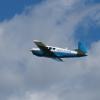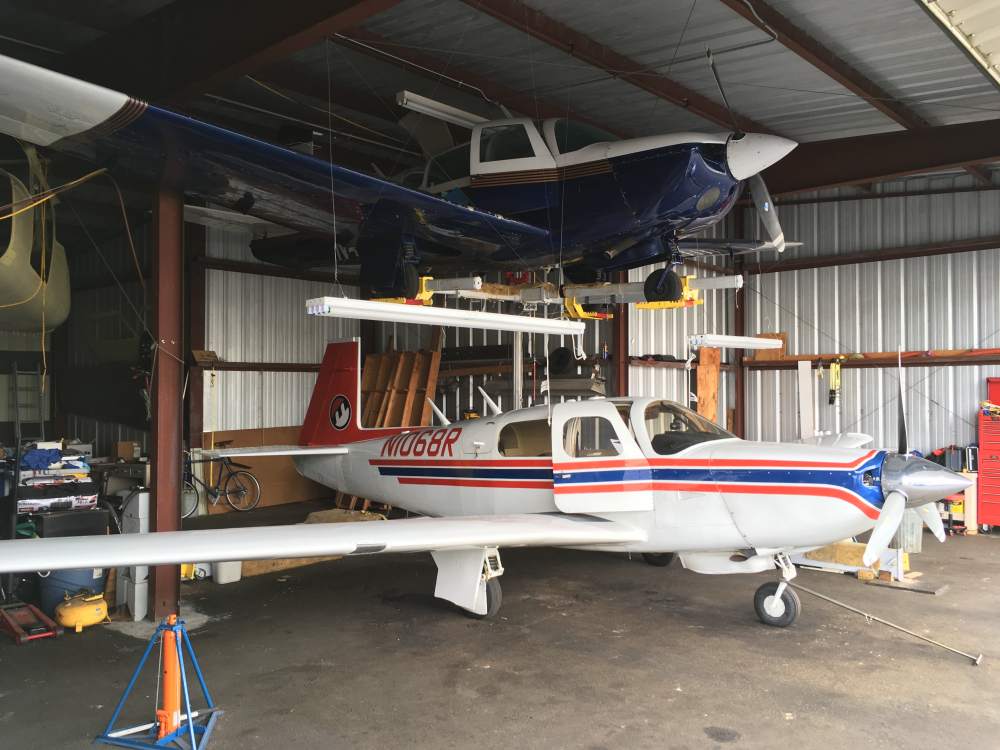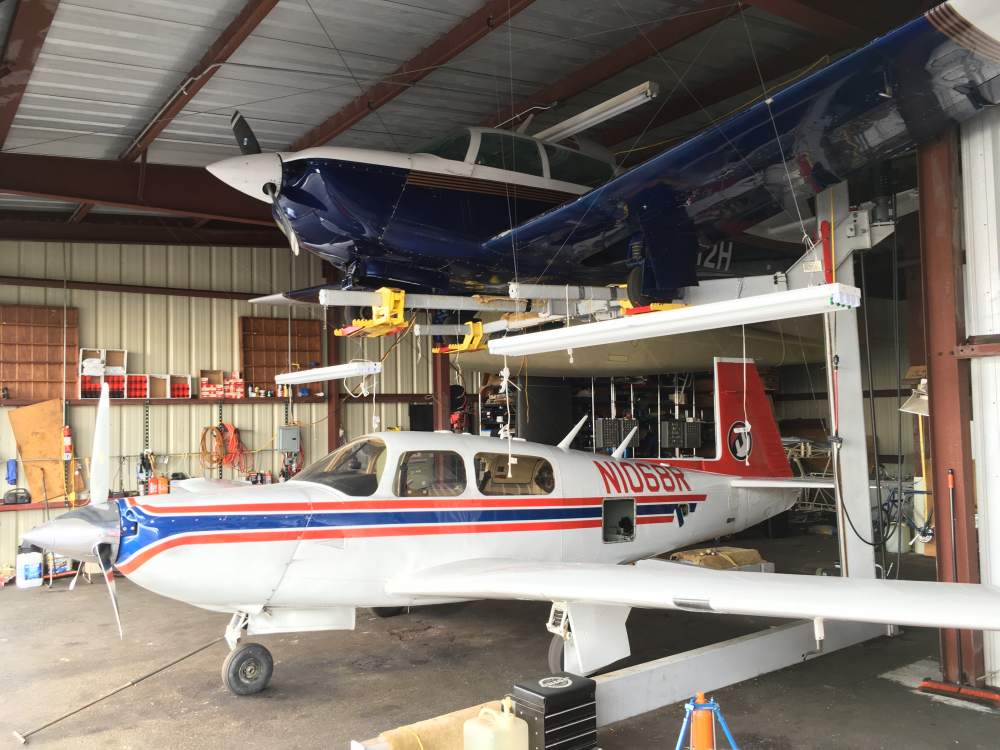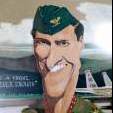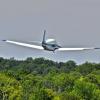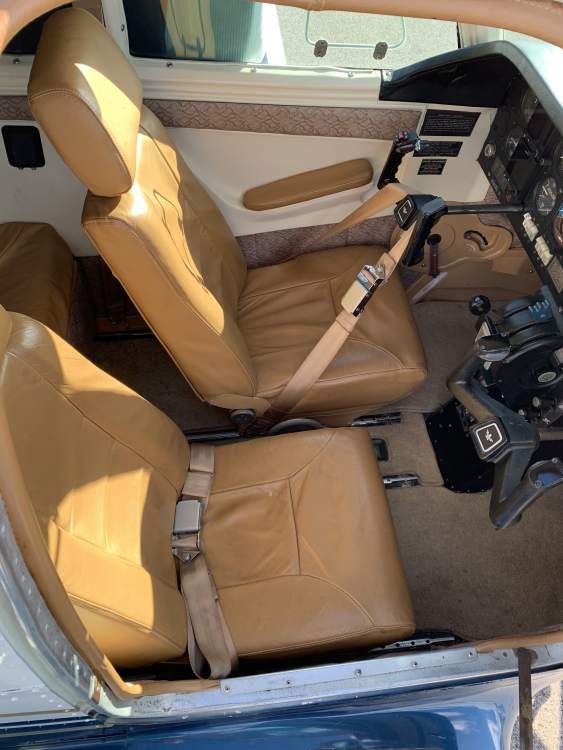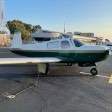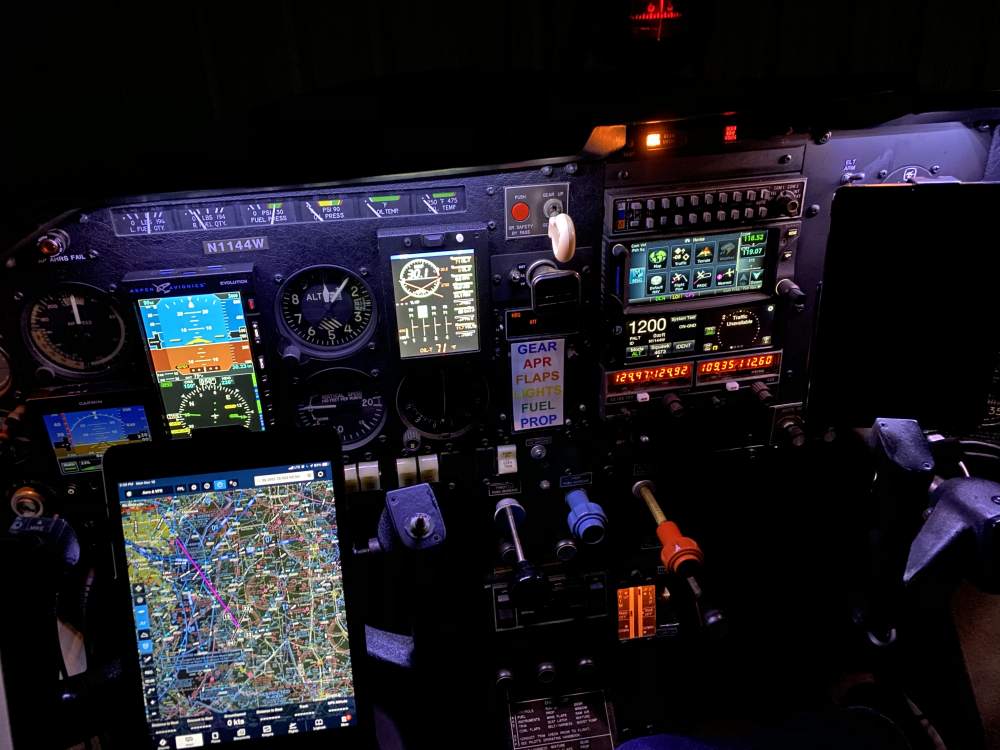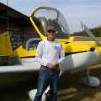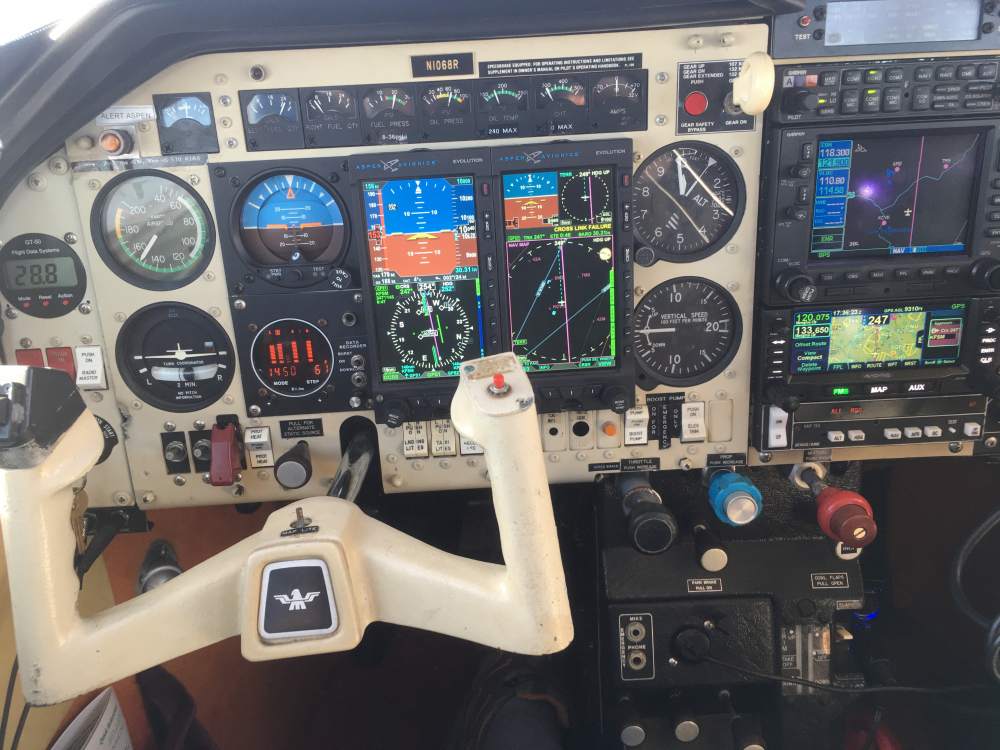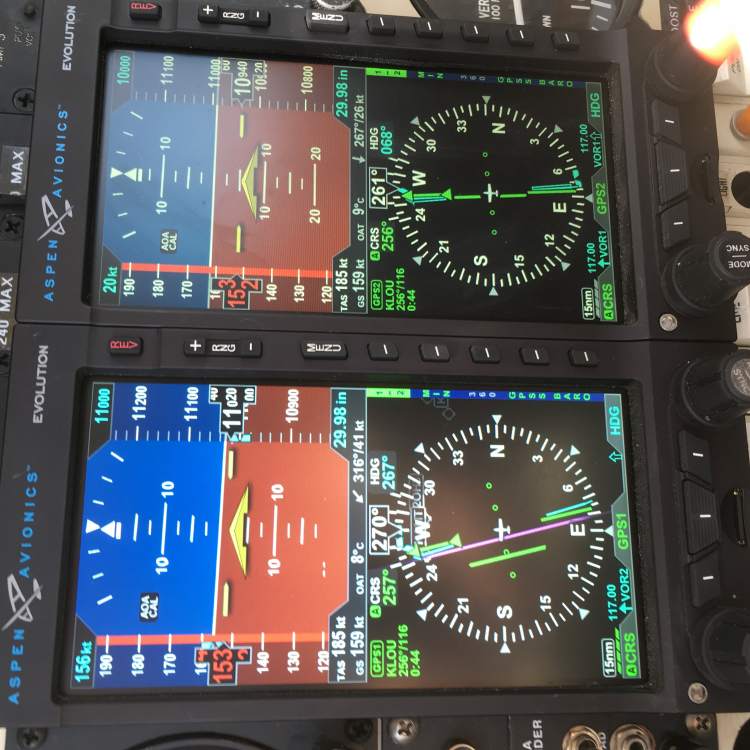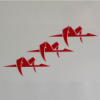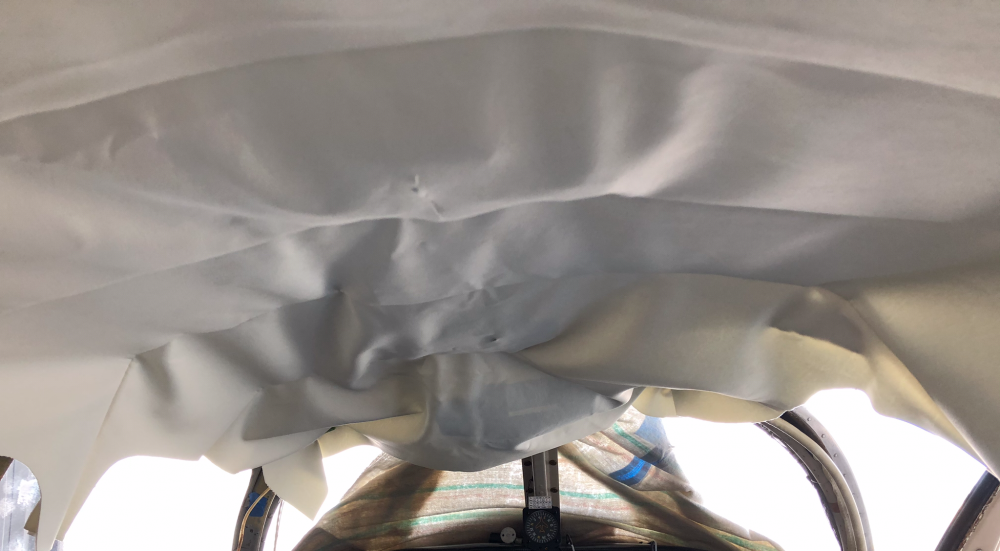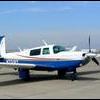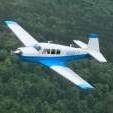Leaderboard
Popular Content
Showing content with the highest reputation on 11/19/2020 in all areas
-
5 points
-
I try really really hard not to talk bad about people that have done me wrong, but when someone goes above and beyond to do something right I have to share. So my wife and daughter have been flying with me more often this year so we’ve been on the hunt for the right headsets to upgrade for them. I’ve been a Bose A20 user since they were launched, I still use that headset and love it. No complaints except the $1100 purchase price (which isn’t really bad over a 10+ year period when you think about it). I saw a trade in promotion for Lightspeed and thought, hmm, I think the headset my wife has been using is an ancient Lightspeed Mach 1 that I used when flying gliders, got to be 15 years old or so. Out to the plane I go and sure enough they are, and Lightspeed offers $100 for it as a trade-in, so I ordered a Zulu 3 last night. When I received the confirmation email it said to allow 2 days for order processing...uh oh, we really wanted them for a trip next week. So I call Lightspeed today to tell them my woes and they really stepped up! We should have the new headset possibly tomorrow or Monday at no extra costs. I offered to pay extra for shipping and she refused saying they wanted to make sure that I had them in time. Unreal customer service from Lightspeed Aviation! I don’t know how they will compare to my Bose but I’m happy to give them a try, maybe I’ll give the old Bose to my daughter and keep the new Zulu’s for me! (My wife likes the lightweight in-ear style over headsets so we ordered a Clarity Aloft Classic for her.) Anyway, LightSpeed Aviation, go here to purchase: https://www.lightspeedaviation.com/product-category/headsets/ Happy flying!5 points
-
5 points
-
I've owned my Rocket for about 18 months. I had a Maxwell prebuy on a very good airplane and replaced all the avionics. Since I bought it the only maintenance "issues" have been a leaking left brake, an adjustment of the Air inlet filter box (had backed off the inlet and was not sealed leading to the engine breathing cowling air...diagnosed by higher than normal CDT), and minor tweaks to the idle and full power mixture. That and my #5 runs about 20 degrees hotter than I'd like and we keep fooling with that to cool it down, but that's tomget it down around 360, I can keep it at 380 pretty easy albeit with a bit more gas than I'd like. 0 squawks at first annual at AGL Aviation in May. At full power on takeoff I get about 34.5 gph, 37.5 MAP and 2650 rpm. Rocket recommended FF is 33 but Savvy suggested a touch higher for climb cooling. I normally cruise at 65% at any altitude, 30", 2200 rpm, 1500 TIT, 18.7 gph about 100 ROP. That gets me 197-200 KTAS between 14,000 and 16,000 MSL. Around 9,000 185 KTAS. I can run LOP at 55%, 26 MAP, 2200 rpm, 1575 TIT, 11 GPH and do 163 KTAS AT 5,000 MSL....almost J "efficiency" if I don't mind going slow.4 points
-
At one point I was flying a number of different aircraft, I was in my Mooney practicing loss of engine on takeoff. I was trying to determine my minimum altitude above the ground that I could make the runway if I lost an engine on takeoff. During one of the attempts I pulled the mixture back instead of the prop, made my circle back to the field looking at alternate landing areas. As I finished my turn and I determined that the field was could not be made and there were no safe landing areas I pushed the prop in and moved over to apply throttle. This is when I realized that I had actually pulled the mixture and not the prop. That realization came when the engine surged back to life. It was a non incident but it had the potential to be something serious if the engine hadn’t fired back up. made me realize that even if you give yourself plenty of safety margins when your practicing emergencies, you can still end up in a bad situation. Brian4 points
-
You have no idea what type of insurance claim was made here, nor do you know the cause of the failure. The book of Steingar should have a chapter recalling how pilots on this board responded graciously to someone that pranged a prop hard enough to break the crankshaft by using poor short field technique to land at an airport with a runway >3000’. That pilot made the “short field” approach not knowing that the runway was 35% longer than he thought because he did not verify destination runway length before departing. Poor airmanship can be excused but the lack of self awareness is a tougher pill to swallow.3 points
-
3 points
-
Don’t happen to have a set Bose A20’s laying around do you........ asking for a friend3 points
-
Ok - you win the mooniac of the month award. Hands down!3 points
-
I replaced the cat whiskers with a set of blade antennas. Im not sure how the factory did it cause the fin is only 3/4" thick there and the 90 degree BNC connectors are 1"... And i put in plates with nutplates on them, I think you'd use rivnuts. Anyways quite a project but looks cant be beat. looking through the photos I had quite the rat rod / parts chasing shop beater. We caught the FBO employees actually laughing at us. But it was winning air races and we could go anywhere with a VFR GPS and a VOR.3 points
-
My name isn't So Cal, and I don't remember saying it hurt my feelings. I'm only wondering what injecting a politician's imagined policies into the discussion has to do with Mooneys and autopilots.3 points
-
Good questions Rob, first I have to say I don't do any of this unbriefed in advance. Before the flight, we discuss the engine out emergency glide range and power off landing procedures as well as the expected rate of descent per their POH. This includes how we expect to glide to above an airport if we have excess altitude, then lower the gear and perform 360's abeam our intended point of landing - which is the instrument landing zone a 1000' down the runway (not the threshold so as to give us runway buffer if we came up short). Then we'll go out and do it, combining the emergency glide to the airport, along with the emergency spiral descent down to pattern altitude and then the 180 degree landing. Sounds like a lot of power off - but its not as I'll explain. So several miles away from an airport (~7-10nm) and more than 5000' AGL we begin with the emergency glide demonstration pulling the throttle to idle. First we don't touch the prop, but trim to best glide and see out descent rate. Being very pitch sensitive this take a couple minutes to see our descent rate settle out to make note of. Now we pull back the prop and watch how the plane essentially accelerates from the decreased drag and again wait for the descent rate to settle out and now compare how well its improved at Vg and we readily see why its so important to pull the prop back. By this time the engine is getting cold, so next up is to demonstrate how we can simulate the best glide descent rate with the gear down and some engine power added to compensate for the increased drag. So we lower the gear and add enough power with the prop back forward to maintain the same descent rate we just verified at Vg but now with some power to warm up the engine - and we continue to glide to the airport in this configuration. Next we're discussing our remaining altitude AGL and distance to the airport as well as use of glide range rings on our iPads to help with our situational awareness of whether we can make the field. If not on a weekend with an unbusy airport, we'll continue the exercise to the airport, spiral down, now with throttle/power back to idle and followed by the 180 power off landing (i'll add some momentary throttle to clear the engine as needed). On the weekends and sometimes mid-week there is just too much traffic and instead we'll join the traffic pattern land and then do power off 180's to practice the power off landings portion. We've also discussed that if we have to go around, we won't go to full power right away if oil or CHTs are too cool per POH recommendations, but will go to minimum power to maintain level flight (~17-18") as the engine warms up enough to go full forward and climb. There is never any doubt about the engine nor letting it get too cold. While the student gets real world demonstration of the emergency glide procedure, its results compared to book, the emergency spiral/360's with ability to slow to minimum sink once at the field rather than use best glide and then of course making the power-off landing. The only item missing is the startle factor management from just out of the blue pulling the throttle and saying now what. That's a different exercise I do but I'll limit that to being high too but won't play that out to low level for multiple reasons. I end that though after trimming for best glide, picking and aiming towards best landing option and going through the engine restart procedure - then we recover while still quite high. One of my aversions to playing it out low level is that places to even practice ground reference maneuvers in my SOCAL area has gotten hard to come by due to large number of noise complaints. We're often already flying pretty far for a spot away from houses and people to practice ground reference maneuvers as it is.3 points
-
2 points
-
SOLD New to market as of today 11/19/20! I am selling my F model with RayJay Turbo. I will add some pictures here but you can also see some in my profile. Based in the Houston area at DWH. I will list it here for a few days before going to full marketing. 1. RayJay Turbo - If you do not know about the turbo it is a game changer. Yes with the RayJay you can get to the FL's if you want. The highest I have been is only 17500 at about 160kts True Airspeed. Turn the Turbo off and never use is a turbo aircraft is always possible. The best of both worlds! I usually go to 8k to 15k with turbo and in performance cruise get around 160kts TAS at 12 GPH or Fly lean of peak (YES GAMIS) and get about 150kts TAS at around 8GPH. I have even gotten to my altitidued at 15500 going from Houston to South Carolina climbing at 750 all the way up and then disengaged the turbo and flew extreme economy cruise and got less than 7 per hr. 2. About 2800 TT (Time will change a little) 3. About 750 SMOH (Time will change a little) 4. Paint is in good shape 5. Leather Interior is in good shape 6. I have owned the plane roughly 3 years and since then took care of some minor squawks and have done some upgrades to include. Avidyne 540 with Remote Mount Transponder Avidyne 322 (just my opinion the best GPS on the market just under the Garmin 750). Talk with Foreflight and the Avidyne app at the same time split screen. New antennas and new antenna wiring for both coms Secondary TKM 170 NAV COM with VOR Dual Flush mount G5's for AI and HSI - No more PESKY VACCUM SYSTEM PS Engineering 450B audio panel (dual blue tooth, 3d intelli audio etc) JPI 900 Flush Mounted engine monitor - No more unreliable gages Gami Fuel Tuned Fuel Injectors (lean or rich of peak) CiES Fuel Sending Units. The most accurate sending units you can have .... so between the JPI and the CiES you can have the best possible confidence in your fuel levels. Sensorco CO detector The new panel work included adding the rack for the Garmin GFC500 auto pilot control head. This plane will only need the long awaited autopilot itself to include the control head servos, and the trim/yaw options with no panel work to accommodate the unit. New Mags (both) 2018 New Ignition Harness 2018 Oil cooler relocation mod 2018 New Shock disk 2018 7. MSC maintained since I owned it! This plane is basically done the only thing I was going to do in the near term would have been the above autopilot (already scheduled for Jan - might be able to keep my time slot), patch/reseal/bladders on the tanks (Again I am scheduled for Jan patch at the time of GFC500). And, at some point in the future prop (this still requires the eddi current 100 hr (cost me about 250 every hundred hrs))/cowl/windshield mods. People will ask why and what I will fly next. I have an Ovation in the works so the F needs a new home. I might be open to a 3 or 4 way partnership if someone wanted to organize it as long as it was at DWH. Feel free message me here, email me at wcburgoyne@gmail.com or to call me at 713-805-3574. Carr2 points
-
2 points
-
There are actually two K models for rent in SOCAL - a 231 at Santa Monica (Santa Monica Flyers) and a 252/Encore at CRQ (Pinnacle) . This is most unusual to see Turbo Mooney's for rent. I really don't recommend checking either of these out though. It'll ruin your future prospects for ever flying a NA again. Once you experience benefits of Turbo few could ever go back to NA! The other option is a very early M20A or B at Dubois at Chino. For any of these, you would join the club or school and then use one of their instructors.2 points
-
I'll add: I hate going slow. That J-like deal was an experiment. I go fast. Its a Rocket !2 points
-
@kortopates just south of you in San Diego area. Paul is a MAPA safety instructor with fine credentials.2 points
-
I'd suggest you contact @mike_elliott He's is Florida on the Gulf coast and if he can't do it, he has some other Mooney CFI's that can. Realistically, I'd give up the notion of flying your family in the bird for Christmas, these things always take longer than you expect and very often the ferry flight reveals some maintenance needed. Plus you've mentioned you can only fly weekends and you're going to need every one of those 10 hrs of transition training if not more, doing maneuvers and landings, before you're ready to solo. Although the cross country will be a great learning experience and you'll lean a lot about the airplane, its not really the intensive training you need initially in the pattern. You'll probably want to wait till you get some solo time built up before taking your family and then pick the first flights very carefully for distance, weather and conditions so that they'll be confidence inspiring rather than scary. Lastly the insurance requirements you refer to are what are referred to as the Open Pilot Clause - they just ensure you the named insured are covered if there is an issue, but the CFI could then be subrogated against because they're not insured by that. Because of this, expect any experienced CFI will require to be added as a named insured with waiver of subrogation so that the policy insures you both. Good luck and enjoy!2 points
-
That makes me thinking of a fun idea. Are there rules where you must install the VOR antenna? A very big-oversized blade "antenna" What if you installed it on the nose so as to act a bit like forward canard like on the Cessna Katmai to reduce stall speed?2 points
-
I have been flying with Lightspeed Headsets for 14 years or so. I currently have the Zulu PFX's which some may not even know about since they were discontinued soon after they were released by Lightspeed. They are an amazing headset and I spoke to 2 reps and neither one knew why they were discontinued (and both were upset that they were) and then the Zulu 3's came out. I think you will be happy with your Lightspeeds. I have both. I use my Lightspeeds all the time. The Bose A20's are for passengers. I think the Bose are awesome, I just like my Lightspeeds better. And for over 12 years now they have always been a great company for me and treated me well. I have twice sent my headset back to them for some work and they came back like new. In fact I thought they were new at one time they did such a good job. And I had to send them back for work because I was hard on them not because the headsets were faulty.2 points
-
I wouldn’t operate the engine until further investigation. I had a oil control ring break and it took out the cylinder and piston skirt which ran metal through the engine including contaminating the connecting rod big end bearing. It had been getting about 2 hrs per quart since I bought it. Filter, borescope, compressions and recent oil analysis were good at prebuy. I flew it about 25 hrs and it was running well. We discovered the damage at annual when the #4 compression had dropped to 56/80. At this point, we found metal in the filter and part of the ring in the suction screen. We didn’t investigate further than pulling the cylinder since we discovered that the cam was also spalled. I replaced it with a factory rebuilt A3B6 and had the prop resealed and the oil cooler overhauled due to the metal contamination. The point is that if a stuck ring breaks, it can do a lot of damage. Skip2 points
-
It is possible, but unlikely, that the Surefly is the problem. It is most likely the spark plug or the ignition lead itself. In many cases, folding the ignition leads tightly and tie wrapping them can cause the center conductors to break, and pierce the outer braid. This causes a short to ground. Pull the harness off the Surefly and do a high voltage harness test to see if there is a cut, or a a broken conductor in the #4 lead. And if you have Champion plugs from 2014 or older, throw them away.2 points
-
2 points
-
Was #4 the new cylinder? With compression on that cylinder good, the oil control ring may be broken. That much oil in that short of time, most likely something is broken. Scope all the cylinders for any other damage before having just one repaired.2 points
-
The problem is that the blades are only minimum drag a one specific AOA. Any other AOA and they are no longer streamlined. Now if you could mount them on a pivot so they always streamlined like an AOA vane maybe it would be better. And if you could use smaller blades. And while you're at it, since they are rotating to stay streamlined, why not use them for AOA? That was what the article said. Cat whisker antenna was the lowest drag.2 points
-
2 points
-
It’s crucial to reduce potential drag from the leading edge of the wing. I removed the retainer (Mooney stopped using it also) that covers landing light lenses (#2) and gained 3 knots.2 points
-
So, most of the flight school folks want to be airline pilots, not Mooney pilots. But, after a while, the airline pilots want to be Mooney pilots!2 points
-
Oh, man. I really, really don't want to offend anyone, but here's a little aero and engineering straight talk OMG @Hank You have peaked out with drag and ugliness, but I have to say, structurally, that thing ain't coming off. On another great note, YOU might be able to get 3.1415926 knots of speed taking it off. The aluminum work on your vertical is beautiful, too! @ArtVandelay Love the blue tail ... but I am bias. @jetdriven Love the red checker board tail. Beautiful! @PT20J wins the drag issue, though. Cat whiskers (or TV rabbit ears) wins the low drag argument. Although the Cd is high, there is little area, and that area doesn't change with AOA. In addition, due to the sweep of the antenna, the cross section is really an ovular cylinder and not a circular cylinder to the airflow. We (Mooney-Chino) actually ran all three (3) antennae in CFD to see for ourselves. PS. Why do TKS owners put up with the loss of 8-10 knots? Should I start a new thread?2 points
-
Converted my J to a Missile 20 years ago. It is a 1980 model so it required wing tips per mod. Added one piece belly for speed and convenience. Twin Aspens, 530W/430W stack, WX500, GDL88, Flightstream 210, Century 41. Added Monroy long-range tanks due to thirst. Never needed speed brakes. Missile vs. J: The mod (with long range tanks) gives great range and load. I usually fly max 3200 lb. GW on long trips. Fully loaded feels a bit mushy on takeoff compared to lightweight J (more noticeable in high DA airport) but power provides confident climb. In cruise no noticeable difference in feel/handling. CG is farther forward but OK. I don't need any weight in back when flying alone (maybe because I still have a standby vac in the tail). I typically fly trips between Houston area and Albuquerque nonstop. The Missile mod cut one hour off typical trips - real world trips are now usually about 4 hours either direction (oddly). I find the sweet spot for long trips is 10-12 K. I typically get 170-175 kts at 13+ gph. If I stay closer to 12 K and it is colder in winter i can get 12+. As said by others the Missile is tightly cowled without cowl flaps. On hot Texas or NM summer days, esp. if at large/busy towered airport, have a long taxi or extended hold for IFR release I might experience high oil temp on ground and high cylinder temps on take off. I used to fret about it while holding but there isn't a lot you can do other than aggressive leaning on the ground. I simply expedite TO as much as quickly as possible and once airborne I just lower the nose a bit, gain speed and sometimes reduce power a tad to get oil and cylinder temps under control. In 20 years I have replaced one cylinder due to a valve and one due to compression/oil consumption. The IO550A is simple, rugged and thirsty. I like the Altitude Compensating Fuel Pump (some here don't). As long as temperatures are in line I take off and climb wide open firewall forward Throttle/Prop/Mixture all the way to assigned altitude (KISS -Keep It Simple Stupid "Set and Forget"). At altitude I typically cruise at 2,400 RPM and then lean 75 degrees ROP. The standard Cont. injectors are well balanced w/ temps even. The starter adapter on the IO550 can be a problem but that is a Continental problem (not Missile specific). As I said previously I haven't found the need for speed brakes on the Missile although I am often in Bravo and Charlie. I can dirty up the Missile quickly, chopping power, pitching up, dropping gear and partial flaps. The gear mechanism is stout and for over 2 decades has always been reliable for the task. The IO550 is just fine if I pull throttle quickly.- Twenty years is a pretty good indicator although i am sure some here will disagree. You will not want to land on grass, gravel or dirt. The prop clearance is a weak point. The 3 blade Hartzell Scimitar is 75 inches vs the stock McCauley at 74 inches. You may think one (1) inch is immaterial but with the added weight of the IO550 and prop hanging farther out on the same 3 Lord Discs you get greater oscillation on rough surfaces or a poor landing. If you are on soft ground the nose gear will sink in due to the additional weight of the 550 and 3 blade prop. I can tell you from experience that one person cannot move the plane if that happens. There are several threads on MS of Missile owners refusing to park on grass or wrecking a prop on dirt/grass-Seth, Aug '19 destroyed prop in mud at OSK, FloridaMan, Apr '19 refused to park in grass at Sun n Fun. The full feathering Hartzell PHC-C3YF-2UF is great but rare. If you need parts, Hartzell may need to manufacture. This year I needed the lower half of the spinner (essentially a glorified aluminum salad bowl with a hole in the middle). It cost $2,000 and I had to wait 6 weeks for it to be manufactured. The full spinner 2 piece cone with brackets is $4,000 (none were available nationwide either at the time). The Rocket Eng exhaust is a weak point. It suffers from corrosion. I know one owner from Houston who lost the tail pipe in flight. My A&P found one shop that can repair/fab the exhaust and the product is better than Rocket. The greater weight and flex can lead to more fuel tank leakage. I fight that issue from time to time. Missile vs Ovation (R) I have no facts but looking at profiles it appears to me that Mooney changed the nose gear geometry on the TLS, Bravo, Ovation, Eagle and Acclaim to provide more prop clearance with the heavy big bores. Those planes, while sitting on their gear, look like they are at a greater angle of attack vs the J/K. Maybe someone can refute or confirm. Of course the Ovation has more space behind the back seats. -------------------------------------------------------------- All things considered I am happy with the Missile and am keeping as long as I can fly. I did the Missile conversion as a stepwise investment. Back in 1999-2000 I could not afford (or maybe more appropriately should say "could not justify") a 5-6 year old (1994) Ovation. If I were buying today I think I would buy a pre-2004 Ovation rather than a Missile - Long body supported by factory, more refined, better, CG, more space and I think better prop clearance and maybe air conditioning!! - and without the expensive disaster of the G1000 post 2004 (which may get fixed some day soon most likely for lots of $$$).2 points
-
At this point I'm not going to remove that bushing. There doesn't seem to be anything wrong with it. In my little experiment I tightened the bolt up to 60 ft-lb easily. I'm suspecting that there was something wrong with the prop stud. The prop shop is replacing all six. My A&P didn't think to check and see whether or not that stud it contained a roll pin. Maybe there wasn't a roll pin installed and the Loktite broke. We'll see. Mysterious.2 points
-
Welcome aboard @Norf9. As mentioned, I'm in Denver and would be happy to talk with you about mountain flying, high DA, icing, IFR, and anything about flying in this area. Send me a PM and I'll send you my phone number and we can talk. I'm also happy to introduce you to Mooney pilots in the Denver area, rides, etc. My Mooney is in the shop until Jan some time for the mother of all annuals. But I can certainly hook you up with Mooney owners here in Denver. I can also connect you with Mooney pilots in the Dallas/McKinney area. Since you listed yourself at TKI, I'll be able to add you to the map and send you a link. Look for a PM from me on that. I'm happy to get on the phone and answer any Mooney questions or mountain flying questions you have.2 points
-
2 points
-
I tried the LED post and glare shield lights. The problem for me is that I like to keep the cockpit pretty dim at night and the LEDs don't dim nearly as much as the incandescents. Really, you need to change the dimmer type from current control to pulse width modulated. There are PWM STC dimmers available, but that's more work than I wanted to go to for the few hours a year I fly at night. I'll save that for when I do a major avionics upgrade someday. Skip2 points
-
Please excuse my forum mates forgotten manners (except @MooneyMitch who never had any) Welcome to the forum. Glad you found us albeit mabey for a short time. Please take a moment to post tell us about yourself. Where you are flying out of, etc, etc. @gsxrpilot has a cool map of most of our forum members so he can help locate a candidate to help with your request. Please fill out your details as mentioned before in your Bio. Thanks again for finding us.2 points
-
$299 for full USA nav data https://pilotsupport.avidyne.com/kb/article/353-jeppesen-pricing-for-avidyne-equipment/2 points
-
I bought this: https://www.homedepot.com/p/Crane-10-in-750-1500-Watt-3-Settings-Electric-Portable-Compact-Oscillating-Ceramic-Space-Heater-EE-6492/302131405?cm_mmc=ecc-_-THD_ORDER_CONFIRMATION_BOSS_STH-_-V1_M1_CA-_-Product_URL&ecc_ord=WG22434689 cool to the touch, has all the safety features, good price... won’t burn if tipped over... -Don2 points
-
They're small tube pointing into the wind on the bottom of the wing to the side past the tank. In the modern Mooney's they are in a small NACA duct embedded into the wing bottom pointing into the wind. Vintage Mooney's they can be aluminum tubing come down and making a 90 bend into the wind. Those with bladders will see a de-ice mast directly in front of the vent tube. This usually happens from insects nesting in the tubes when parked on the ramp. I personally wouldn't insert something as large as a allen key wrench into the vent tube. Instead I recommend using some .032" safety wire to wiggle it in the tube and break up any debris without allowing any chance of ramming it further back into the vent or give it any chance of getting sucked into the tank by the vacuum. I fear the tool will break it up by pushing most of back in, rather than allow it come out. I can probably get a picture of a modern one later today.1 point
-
I've got Lightspeeds now and couldn't be happier. I've dealt with their customer service in the past and was really impressed. I've dealt with Bose and been utterly stymied.1 point
-
1 point
-
In the 70s I worked in Niagara Falls for a company that had a pharmaceutical operation in Arecibo. The plan manager lived in San Juan and when the weather cooperated, which was on most days, commuted to work from TJIG to TJAB via his C172. He parked a beater at the Arecibo airport. I flew with him 4 of the days I was visiting the plant, and on the flight back to San Juan the 2nd day we overflew the telescope. I was amazed, since I hadn't previously known it was there. That was in 1974, and it was a bit newer back then. BTW - The drive to the plant was only about 1.5 hours from San Juan, but it's way more fun to fly to work.1 point
-
I'm right behind you. Have signed a purchase contract ... Will report here.1 point
-
1 point
-
What I learned during my headliner replacement was, maybe after you do three or four, you’ll start to get the hang of it. The round-window Mooneys have that strip of sheet metal around the cabin and baggage doors with the blind upholstery fasteners. It’s a real challenge. Hanging it from the bows is only the beginning and was the easy part. As a one-time project, it’s difficult to get it right the first time. Sure, it will almost certainly look better than what you took out (my headliner was the original), but I think it’s worth it to pay someone experienced to get it right.1 point
-
The WiFi module is a separate unit and is connected by only 4 wires. Power, Ground and a shielded pair for the RS-232 communication. The Wifi Module most likely is tucked under the panel and possibly secured by plastic ties. May be good to locate it and check that the wire connections are secure and also check for proper shielding. If all looks good, you may want to download the software from the Lynx website. The Lynx NGT9000 stores fault codes that you can access with their software and should give you a possible direction.1 point
-
Wife has the link and a big hint hint, buy one for me Mrs. Claus. She just got a new kitchen. I at least deserve a fancy power outlet. lol. (-:1 point
-
^ This. You're in my neck of the woods, so I'm sure that you can appreciate the mind-numbing drive from Philly to west-central PA.1 point
-
HD great comparison and contrast, best I’ve ever seen..1 point
-
1 point




